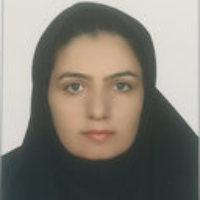Analyzing of the spatio-temporal changes of vegetation and its response to environmental factors in north of Fars province, Iran
Vegetation is one of the essential factors in structure and function of terrestrial ecosystem and it is one of the principal loops in water-soil-plant-atmosphere continuum. Several studies have demonstrated that vegetation covers are sensitive to alteration of climatic, edaphic, topographic and human activities. Thus, alteration in vegetation and its relation with the mentioned factors are important of high importance. In order to investigation of vegetation changes and its effective factors, the current study was conducted in Kharestan region placed in Fars province, Iran. In this regard, the images obtained from ETM Landsat 7 (2000-2017) and meteorological data gained from local and 17 regional meteorological stations were used. Using these images, temporal and spatial changes NDVI and NDVI anomaly were studied. A supervised classification method was used to extract land use map. Finally, the relationship of NDVI with climatic, topographic and anthropogenic factors was investigated. Relationship between NDVI and climatic and topographic factors was estimated using GWR and OLS methods, respectively. Generally, temporal variations showed a slow increasing trend in NDVI value. NDVI anomaly was mostly negative before 2008 but it turned to positive after 2009. NDVI spatial distribution showed an increasing tendency from north toward center and continued to south-west of the study area. The study shows that the vegetation cover change was caused by both natural factors and human activities. NDVI increased in agricultural and pasture lands. Also, natural vegetation has been affected by climatic factors more than irrigated vegetation (agricultural and gardens). Furthermore, vegetation variation influenced by topographic factors likes height, slope and aspect. Also, with an altitude over than 2500 m, NDVI showed a decreasing trend, on slopes lower than 5° it increased. NDVI values in north and east directions were higher than in southern aspects. The overall trend indicates an increase in temperature and a decrease in precipitation during the study period. The maximum positive and negative correlation between mean annual precipitation and NDVI using ordinary least squares method were 0.93 and 0.83, respectively. Also the maximum negative and positive correlation between NDVI and temperature were 0.65 and 0.5, respectively. The highest local R2 values between NDVI with precipitation and temperature were 0.45 and 0.44, respectively, which was observed in the central parts of the region. According to the obtained results through the present study, it can be stated that environmental factors like precipitation, altitude, slope and aspect are the Influential factors controlling vegetation in Kharestan (Fars province, Iran).
- حق عضویت دریافتی صرف حمایت از نشریات عضو و نگهداری، تکمیل و توسعه مگیران میشود.
- پرداخت حق اشتراک و دانلود مقالات اجازه بازنشر آن در سایر رسانههای چاپی و دیجیتال را به کاربر نمیدهد.



